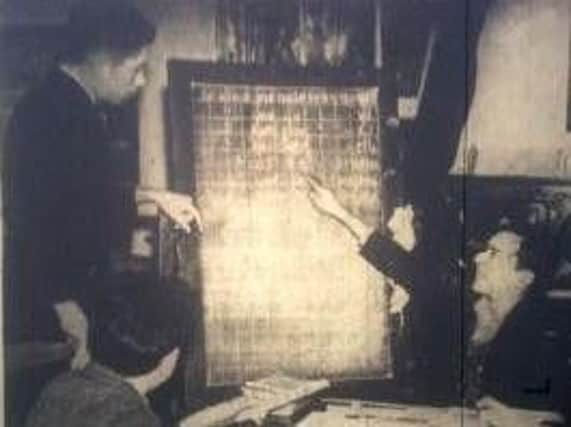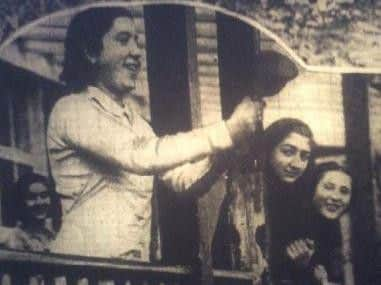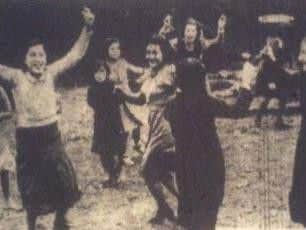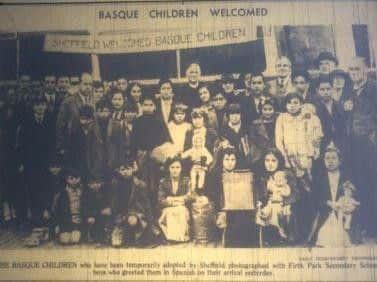Youngsters fled war for peace near Sheffield


The SS Habana evacuated almost 4,000 children and 180 adults from Bilbao to Southampton on May 23, 1937, writes Simon Martinez.
They came on condition that no public money was used – they were to be supported entirely by volunteers and voluntary funds – and that is how it was.


Advertisement
Hide AdAdvertisement
Hide AdThis exodus – its impact on the children, on Britain, on those involved in caring for the children and on the lives of the 250-plus who remained in Britain – is the story that the Association of the Basque Children in the UK records and archives aims to make more widely known. More details about the ninos de la guerra on www.basquechildren.org
A colony in Sheffield
In October 1937, 25 children and their accompanying adults arrived at Sheffield Midland Station to be greeted by a welcoming crowd. After a warm city welcome they went on to their home for six months at Froggatt.
As the Spanish Civil War carried on, the Basque Country to which the children belonged came under the control of the dictator Franco and the fighting ended there. As a result the children then started to return by January 1938.


In April 1938 the colony closed and the remaining children and teachers moved on to Keighley. The BCA’37UK is very pleased to be associated with the exhibition Changing Lives which continues at Weston Park Museum until July 1.
Advertisement
Hide AdAdvertisement
Hide AdSome of the treasured belongings of Enrique Martinez, one of the ninos de la guerra, are in the exhibition.
I am his son and am one of the speakers at the afternoon of talks on the Basque Children and the Spanish Civil War, at Weston Park Museum on May 23 from 1.30pm to 4.30pm.
The other speakers are Pro. Mary Vincent, Dr James Yeoman and Stephanie Wright.


n The following are some extracts from Simon Martinez’s research on the refugee children that arrived locally and the work to support the Republican cause in the Spanish Civil War:
Advertisement
Hide AdAdvertisement
Hide AdThe Labour Party in Sheffield led the council and returned a majority of MPs to Parliament, but the party had suffered nationally with its second electoral defeat in 1935 and so was cautious in identifying itself too closely with the Republican government in Spain.
It was also concerned about the impact on its electoral chances of being unduly influenced by Communist Party members and policies.
The Conservative Government decided to pursue joint policies of non-intervention and appeasement and the Labour Party, both locally in Sheffield and nationally, did not wish opposition to this to affect its electoral chances.


Locally, the failure to influence the national policy led to an emphasis on finding alternative ways of supporting the Republican government’s war efforts.
Advertisement
Hide AdAdvertisement
Hide AdThe Aid for Spain was medical, financial and nutritional. Meetings were held to promote food collections and cash collecting envelopes were circulated across the city.
Collections started in early 1937. At meetings organised to inform and educate the public about events in Spain, ‘quiet words’ were had with individuals and 15 volunteers responded. They set off on the weekend with return train tickets to Paris and, from there on to Spain, to join the International Brigade.
The meetings were organised by broad groupings such as the Peace Council and the Left Book Club.
The Sheffield papers covered the war in Spain and covered in detail the bombing of Durango with a headlines such as ‘town bombed to ruins’, and Guernica with ‘Basques holy city in ruins’ and ‘hospitals wiped out’.
Advertisement
Hide AdAdvertisement
Hide AdThe May Day parade in Sheffield was used to highlight the impact of the war on civilians with a lorry decorated as a house destroyed by bombing. Several small children were carried on this lorry, two of them with bandages representing casualties.


The Sheffield Telegraph noted that “many members of the Communist Party took part in the procession and demonstration”.
The departure of the children from Bilbao “in the pouring rain and their happy arrival in Southampton on May 23” is reported.
My father Enrique and his two brothers Juan Antonio and Tomás were among the children.
Advertisement
Hide AdAdvertisement
Hide AdA week-long exhibition on Spain was hosted in what had been the Independent’s offices on Fargate and the collection associated with it raised £130.
Sheffield industry was in the thoughts of Alderman Thraves, Deputy Lord Mayor, when he opened the exhibition
“In Sheffield they had one firm making armour plate which no shell could pierce and on the other side a firm making shells that would pierce any armour plate that could be made”.
The Sheffield Basque Children’s Committee (BCC) collection van would drive round the streets playing over the loudspeaker Paul Robeson singing Sometimes I Feel Like a Motherless Child, which he had specially recorded.
Advertisement
Hide AdAdvertisement
Hide AdMilk tokens were on sale in Co-op shops and cash collections continued.
All the children were at first housed in tents in a camp and then dispersed around the country.
A welcome at Sheffield station was organised on a smaller scale to the coronation fever, which was preoccupying the city and the nation.
Local dignitaries including the Bishop of Sheffield and Alderman Thraves welcomed the group and posed for pictures. No speeches were made.
Advertisement
Hide AdAdvertisement
Hide AdChildren from Firth Park Secondary School attended with a master and engaged the Basque children in conversation in Spanish.
The Sheffield Telegraph also mentions the presence of a group of city communists who gave the children their clenched fist salute as a welcome.
The banner on the bus taking them on to Froggatt says ‘SHEFFIELD WELCOMES BASQUE CHILDREN’.
The organisation of the arrival of the children and their accommodation appears to have been a humanitarian act carried out by a broad cross-section of Sheffield civil, political and religious society, not a narrow act of party-based solidarity.
Advertisement
Hide AdAdvertisement
Hide AdThe Holiday Fellowship Guest House at Froggatt had been taken over by them in 1932. It had 20 bedrooms in single-storey, bungalow-style wooden construction. A fire before the children arrived had had to be repaired.
The building is described as being close to the Chequers Inn and was replaced by a privately-owned house in the 1940s. They were a mixed group of children, some with siblings and some on their own. Ages ranged from seven to 15 years.
It is now accepted that children experiencing traumatic life experiences as these children did – war, bereavement, separation from parents, movement across international borders to be cared for as refugees – suffer stress from the trauma which requires support and treatment.
It probably benefited them being in the semi-closed environment of the colony where they could rest and play and be among children who had had similar experiences.
Advertisement
Hide AdAdvertisement
Hide AdFrom the photos in the local papers, the children look into the camera with self-confidence and smiling, happy expressions.
Photos carried by the Sheffield Independent show them playing games, performing traditional folk dances and being taught English by the same children from Firth Park Secondary School that had greeted them.
The children were also involved in the fundraising activities for themselves and for the BCC.
Dressing up “in the gaily coloured costume of their race”, they lined the stairway up to the ballroom of the Cutlers Hall at a fundraising entertainment featuring song and dance, hosted by the Master and Mistress Cutler.
Advertisement
Hide AdAdvertisement
Hide AdMentions in the papers are made of them going to the pantomime at the Lyceum in Sheffield and to the children’s Christmas party at Grindleford.
The papers also report heavy snowfall in January 1938, which will have been a novelty for the Basque children.
The plan had been to use the Froggatt Guest House until April 1938 when it was to revert to its main purpose of providing affordable countryside holidays for the families of industrial Britain.
Also, with the decreasing number of children remaining in the Sheffield colony and the ongoing high cost of maintaining it with the staff agreed, the Sheffield BCC began looking for alternatives.
Advertisement
Hide AdAdvertisement
Hide AdThe campsite at Castleton appears to have been considered again as the Sheffield Settlement was a keen supporter of the Basque children, but this did not seem to be necessary in the end.
Some children had been found homes with Sheffield families who were supporters of the ‘Aid Spain’ movement.
Other children will have been moved to other colonies. It appears however that most of the children returned to Bilbao.
The colony closed at some time in April 1938, six months after being opened.
Advertisement
Hide AdAdvertisement
Hide AdThe work of the Sheffield BCC continued after the colony closed and returning volunteers from the International Brigades were willing to publicise the situation in Spain and the need for ongoing support toits people and its Republican government.
Noel Garritt had been a teacher of biology and physical education at King Edward VII School and had fought in the defence of Madrid, being wounded at the battle of Jarama where he held the rank of sergeant.
He then served as a lieutenant - as a political commissar. They were responsible for maintaining morale among the volunteers.